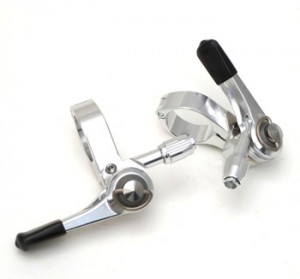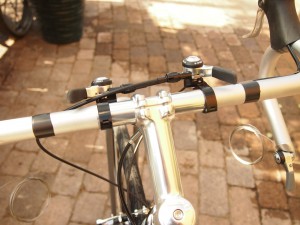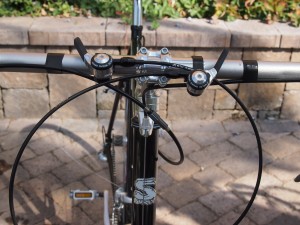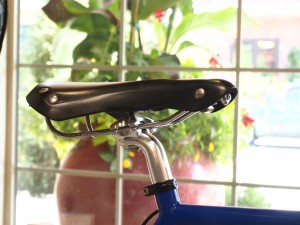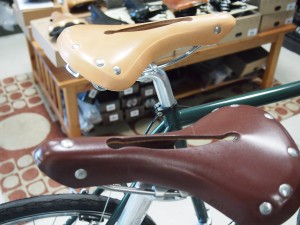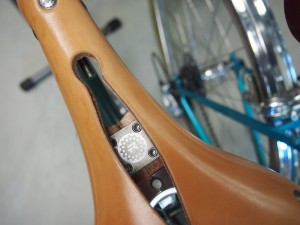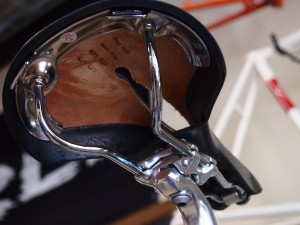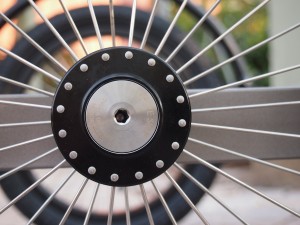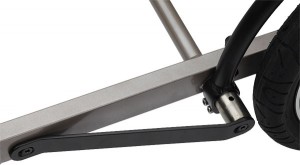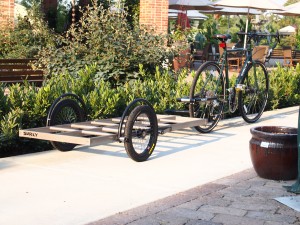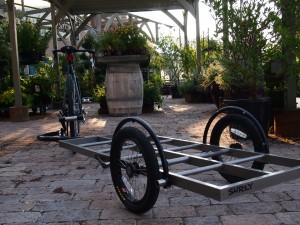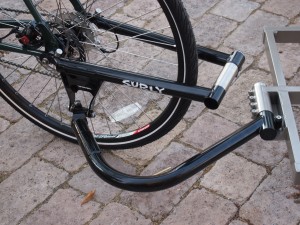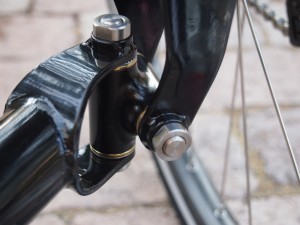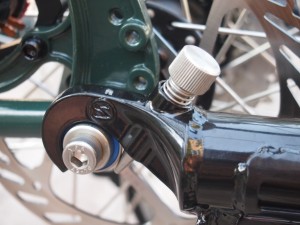A customer found this bike, an old Schwinn mixte, on Craigslist and bought it for his significant other. After bringing it to me to check for any obvious damage or misalignment he took the frame to a local paint shop and had it powder coated gloss black. Then he brought it back to me and we outfitted it with new components. I don’t know too much about Schwinn bikes except that there is enough history with that company to fill more than one book, but I don’t think this was a particularly high-end bike. But with new parts it rides surprisingly well and will make a nice commuter/day tripper.
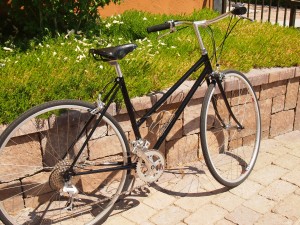
She decided the Brooks B68s saddle was a keeper right out of the box. A 9 speed rear cassette and double chainrings provide a practical range of gears. The original bike had 27 inch wheels. The new wheels are 700c, a slightly smaller diameter, but work fine with the medium reach brake calipers.
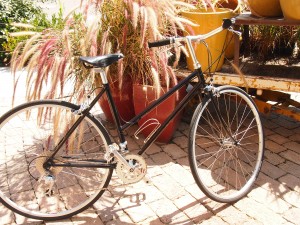
The stem is the Nitto Technomic Deluxe 225. We could have got the bars as high or higher with the Nitto Dirt Drop stem but this was the aesthetically preferred solution. That actually is a huge cassette.

The Ahearne/Map handlebars have a slight rise and a nice ergonomic sweep and they look sportier than Albatross bars.
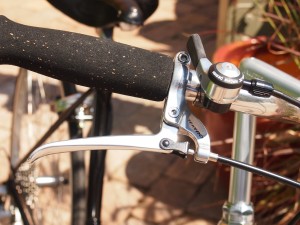
Dimension cork blend grips. The Tektro FL-750 levers are very clean and add a nice vintage look. The IRD XC-Pro 9 speed indexed top mount thumb shifters are a top of the line, modern version of a tried and true design.
Not counting what he paid for the bike, with parts and my labor, this build ran about $1275.00. Not cheap, in fact a new Long Haul Trucker can be had for the same price. But the end result is a unique, sporty, classic looking bike. It was fun to put together and the new owner loves it.

